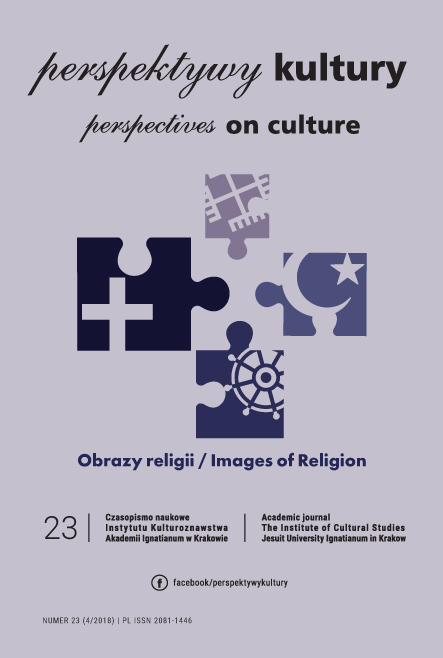“Song of Songs” in Czesław Miłosz’s translation, read as dramatic text. The analysis of dramaturgical aspects of the work and an attempt to translate them into the expressive language of theatre
Abstract
Song of Songs in Czesław Miłosz’s translation, read as dramatic text. The analysis of dramaturgical aspects of the work and an attempt to translate them into the expressive language of theatre. The article discusses a theatrical adaptation of Czesław Miłosz’s translation of the Song of Songs, commissioned for the Krakow 2000 Festival. The adaptation was made by Monika Rasiewicz (academic teacher, actor and stage director) together with the students of the PWST National Academy of Theatre Arts in Krakow, and was staged at the Jewish Museum located in the Old Synagogue at Szeroka street in Krakow. The choice of this particular translation determined the interpretation of the “drama” and the division of the text into roles, or “dramatic characters”. Of various possible interpretations, the authors decided that the text should be performed by three persons, and hence divided into the characters of the Bridegroom, the Bride, and the Choir. In an attempt to emphasise the dramatic aspect of the text, and to recreate it on stage along with all its climaxes, the authors produced a colourful tale about the meeting, the engagement, and the fulfilment of love between the bride and the bridegroom in the act of marriage. The production was rich in theatrical means such as decorations, costumes, props, music, or stage light, which were all accordingly adjusted and used in line with the adopted interpretation. During the preparation of the spectacle, the authors relied on the expertise of Reverend Professor Tadeusz Brzegowy who specialises in the subject, and who supported the project with his knowledge and spiritual patronage. His advice and suggestions had a major impact on the final shape of the production. The preparation of the spectacle included intensive workshops whose objective was to develop necessary means of expression, such as vocal techniques (e.g. phrasing, intonation, melodeclamation), gesture, and movement within the theatrical space, as well as to gain a deep comprehension of the Song, by a thorough study of the text of the poem, but also by reading secondary sources in order to get an insight into the origins, history, and meaning of the work.
Copyright (c) 2020 Perspectives on culture

This work is licensed under a Creative Commons Attribution-NoDerivatives 4.0 International License.
Autor, zgłaszając swój artykuł, wyraża zgodę na korzystanie przez Wydawnictwo Uniwersystet Ignatianum z utworu na następujących polach eksploatacji:
- utrwalania utworu w formie papierowej, a także na nośniku cyfrowym lub magnetycznym;
- zwielokrotnienia utworu dowolną techniką, bez ograniczenia ilości wydań i liczby egzemplarzy;
- rozpowszechniania utworu i jego zwielokrotnionych egzemplarzy na jakimkolwiek nośniku, w tym wprowadzenia do obrotu, sprzedaży, użyczenia, najmu;
- wprowadzenia utworu do pamięci komputera;
- rozpowszechniania utworu w sieciach informatycznych, w tym w sieci Internet;
- publicznego wykonania, wystawienia, wyświetlenia, odtworzenia oraz nadawania i reemitowania, a także publicznego udostępniania utworu w taki sposób, aby każdy mógł mieć do niego dostęp w miejscu i czasie przez siebie wybranym.
Wydawca zobowiązuje się szanować osobiste prawa autorskie do utworu.





